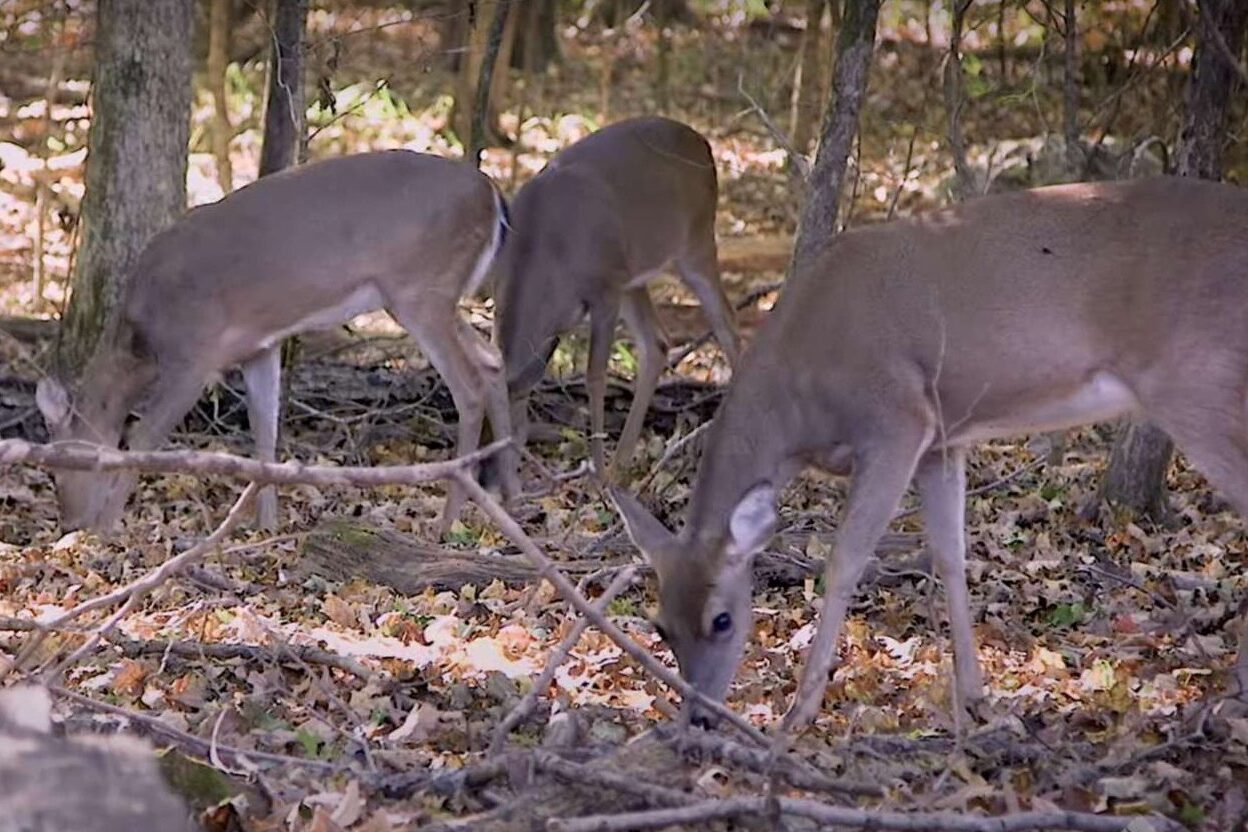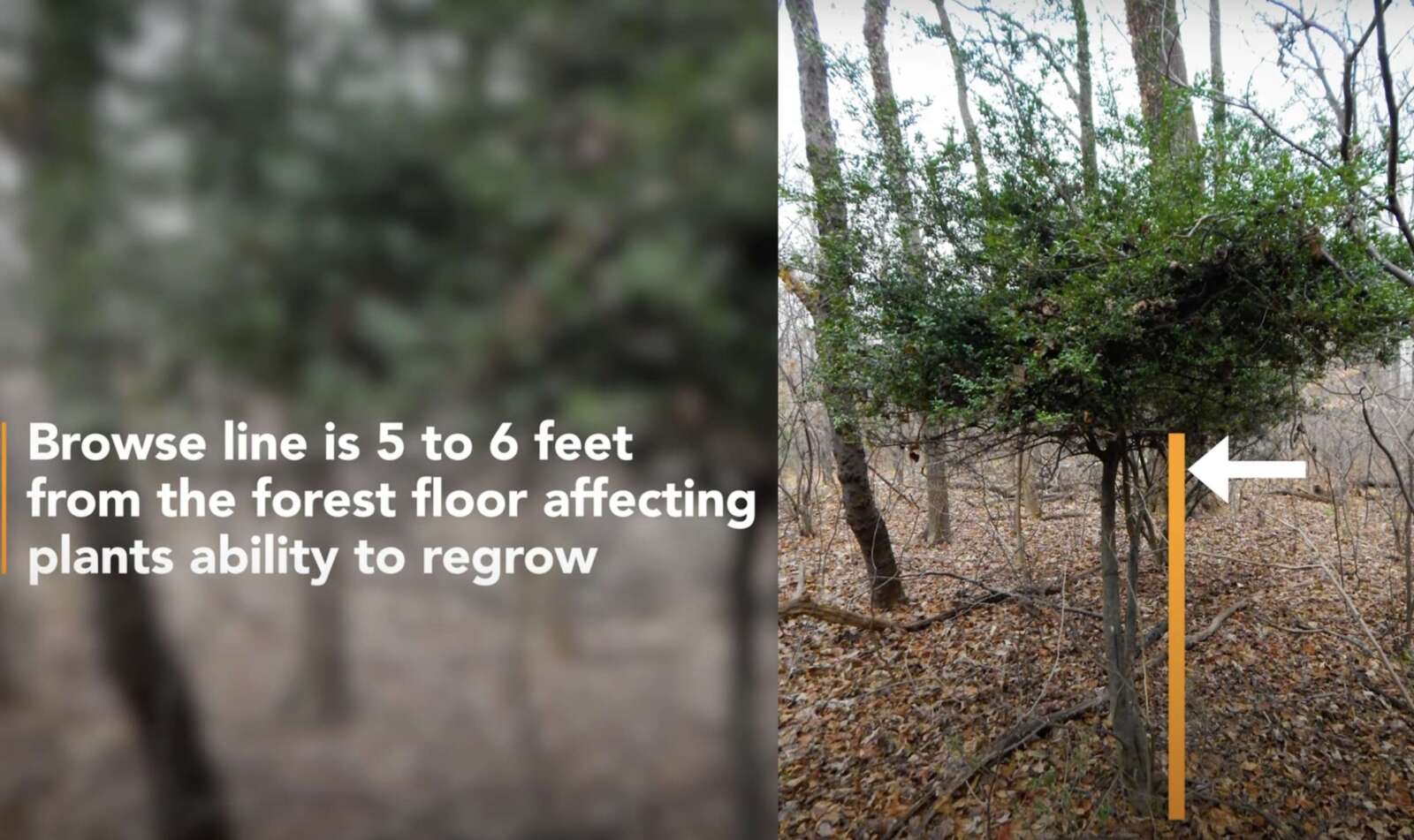
(Updated at 4:30 p.m.) Two groups have got their antlers locked over whether and how to manage deer in Arlington.
Arlington’s Forestry and Natural Resources Commission, (FNRC) is calling out the Animal Welfare League of Arlington, which handles the county’s animal control service, for “publicizing incorrect and misleading information about deer management,” according to a letter it sent to the county.
After a consultant determined that parts of Arlington County may have deer populations that exceed “healthy” levels, the County Dept. of Parks and Recreation charted out a mitigation strategy. It is mulling four management strategies: sharp-shooting, citizen hunting, sterilizing or building fences. There will be more public engagement and commission hearings before the county makes a decision.
When the initial population numbers were released, AWLA disagreed with the claim that Arlington has “unhealthy” deer levels. Now, AWLA says culling is unwarranted, expensive, ineffective and unsafe.
The FNRC says it supports reducing the deer population to preserve natural resources, including trees, shrubs and wildlife, saying their overgrazing hurts other wildlife and deer themselves. AWLA’s position, it continues, “could cause serious harm to the County’s natural resources.”
“The FNRC is puzzled by the AWLA’s opposition to reducing Arlington’s deer population, because studies also show that lower numbers of deer in the County would result in healthier deer, an outcome that an animal welfare organization should support,” according to the letter from FNRC Chair Phil Klingelhofer.
While AWLA was not able to respond to a request for comment before publication, it laid out its position in a post on its website last month. In a statement to ARLnow after publication, the agency said it stands by its previous statements. It also said it considers the county’s approach to be incomplete and the debate largely one-sided.
“Despite the inherent differences in opinions among stakeholders, we believe it is imperative to consider every side of the discussion to find the most appropriate solution for Arlington,” the agency said in a statement. “A more inclusive process with diverse perspectives will lead to a better-informed decision. It is vital to have more voices at the table, rather than solely those advocating for specific interests, such as tree preservation.”
AWLA suggests sterilization as more humane and effective. Klingelhofer disagrees.
“Indeed, we understand that the Department of Wildlife Resources will not approve of sterilization as a population management tool,” he said. “In contrast, successful culling programs have been implemented in scores of urban and suburban communities across the United States, bringing dramatic improvements in the local environments.”
AWLA also says hunting deer can hurt other wildlife while Klingelhofer says numerous peer-reviewed scientific studies shows the opposite.
The animal control agency says deer are being unfairly blamed for changes to the forest understory also caused by foot traffic and climate change. Klingelhofer emphasizes that deer in Arlington were found to be eating away the understory at substantial rates.

AWLA argues that Arlington has an average of 13 deer per square mile — much lower than neighboring jurisdictions that began culling, such as Fairfax County, with 90-419 deer per square mile, and Howard County, Maryland, with 47-118 deer per square mile. Culling in these counties, it says, has become a permanent but ineffective solution.
“Neighboring jurisdictions have spent hundreds of thousands of dollars and killed countless deer, and yet these programs have continued for decades with no end in sight,” Wolbert said. “Hunting programs in Fairfax County and Howard County, for instance, began in 1998 and still continue to this day.”
Klingelhofer says Arlington’s deer population rates are higher. Forested parts of Arlington have rates of 20 and 39 deer per square mile and Klingelhofer says it could even be 60 to 250 per square mile if only natural areas where deer live are taken into account.
“Even if there was a deer overpopulation problem, the lack of deer in Arlington when compared to neighboring jurisdictions suggests that we have the time for a more measured, humane approach before resorting to lethal options,” Wolbert said.
The commission accuses AWLA of making emotional appeals, such as saying that, if culling begins, “it will not be uncommon for residents to find evidence of dead deer in their backyard.”
“The FNRC has been a strong supporter of AWLA in the past, and the Commission is reluctant to criticize such an important community organization,” Klingelhofer said. “But in this case, the FNRC believes we have no choice.”
AWLA, for its part, says the county needs a “well-rounded conversation that encompasses all perspectives and accounts for the comprehensive ecological implications of the proposed deer management project.”
“Only through open dialogue and collective consideration can we arrive at a balanced and effective resolution for the betterment of Arlington’s natural environment,” the statement said.

